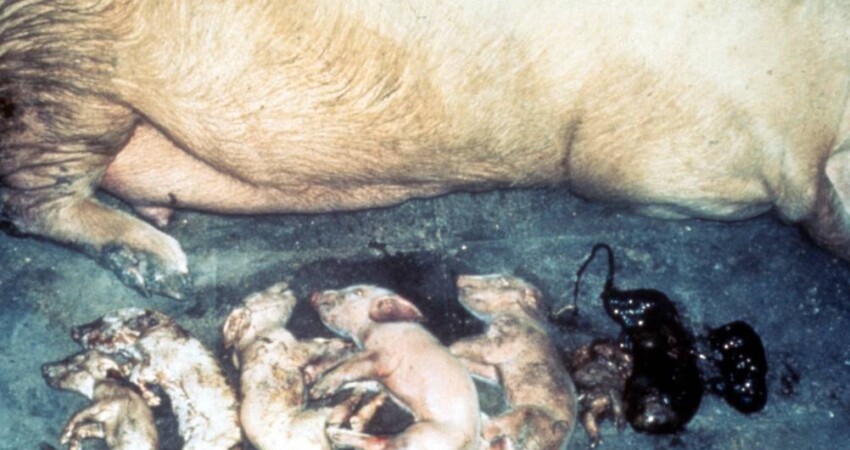

Abortion means the premature expulsion of dead or non-viable foetuses. Embryo loss occurs when the death of an embryo occurs, followed by absorption or expulsion of the embryo. Healthy embryos grow into foetuses.
There is often alarm when an abortion is seen but it should be remembered that there can be loss of embryos at any time during early pregnancy, which often go unseen. Embryo loss or abortion can be considered in three main groups:
– During the period from fertilisation to implantation
– During the period of implantation at around 14 days post-service to 35 days.
– During the period of maturation, which results in premature farrowing.
Losses can take place at any stage from approximately 14 days after mating, when implantation has taken place, through to 110 days of pregnancy.
Pregnancy is maintained through hormonal changes initiated by the implantation of embryos at day 14. These changes allow the corpus luteum (the body from which the egg is released) in the ovary to develop and produce hormones essential to maintaining pregnancy, such as progesterone. The presence of the corpus luteum is necessary to maintain the pregnancy throughout the whole of the gestation period. The loss or failure of the corpus luteum through any cause initiates the farrowing process, hence an abortion, or if near to term, a premature farrowing.
Natural biological failures of pregnancy occur across all species due to a variety of causes. In healthy sow herds, abortions observed by stockworkers occur in less than 1 out of 100 pregnancies. The cost of an abortion can be calculated quite easily, taking into account the cost of feeding the sow during a pregnancy period and the loss of margin over feed on the loss of the piglets.
Occurs in breeding female adult pigs (sows and breeding gilts). Usually less than 2% of sows affected, however acute PRRS may cause rates to rise to 20% or more. Sow may show signs of illness (lethargy; inappetence; diarrhoea/scours) or may be completely normal, Sows may show clinical signs of a specific disease, e.g. classical swine fever or Erysipelas, the delivery of a premature litter with or without mummified pigs, Mucus, blood, pus discharges from the vulva. Sow/breeding gilt is not in pig as indicated by occurrence of next heat (most fertile stage of menstrual cycle).
Infectious agents can bring about abortion in three ways:
– They can invade the placenta, cause inflammation (placentitis) and sometimes necrosis (tissue death), cutting off the nutrient and oxygen supply to the foetus.
– They can invade the foetus and kill it.
– They can multiply elsewhere in the body causing fever and sometimes toxaemia (toxins in the blood).
The major infectious bacterial diseases which spread through herds and cause abortion are brucellosis and leptospirosis. These infectious agents affect increasing numbers of sows in the herd with typical clinical signs of the disease.
Treatment and management
Records help to identify reproductive problems. These should include information on: Age (or parity) profile of the herd, sow number, Feed and amounts given, Clinical observations of the sow and any disease history, Parity, Boar used during mating; date of service, Failure to come on heat, Date of abortion and condition of aborted piglets and many more.
Feed: Increase feed intake from days 3 to 21 after mating.
Heat and light management: The outdoor breeding female should always be derived from at least one pigmented parent. Provide extensive shades so that the sows can protect themselves from the sun. Site the arks in the wind direction so that with open ends cooling can take place. Provide extensive well-maintained wallows suitably sited so that sows do not have too far to reach them.
Contact with the boar: Boar presence in the dry sow accommodation is recommended from the day of service through to the day of farrowing. The boar should be mixed in or have access to the group for at least the first 21 days of pregnancy. There is clear evidence that this will improve farrowing rates particularly if they are associated with summer infertility. If sows are individually housed the boar should be allowed to move down the passages and make social contact daily. Increase the mating programme by 10-15% over the anticipated period of infertility. Because boar semen can be affected follow each natural mating 24 hours later by purchased AI.
 Contact Jaguza Support
Contact Jaguza Support